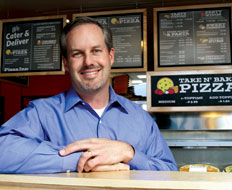In an economic climate full of uncertainty and change, many businesses have turned to interim executives to right the ship. The quick-serve industry is no different. In June, Denny’s Corp. named chairwoman Debra Smithart-Oglesby interim CEO after Nelson Marchioli left the company. In August, El Pollo Loco chose Steve Sather to serve as acting president and chief executive when former CEO Steve Carley left for the same position at Red Robin.
Chris LaCorata, executive director of the Interim Association in Charlotte, North Carolina, says hiring an interim rather than a full-time executive serves many functions for a company. For instance, he says, a company may be looking for more execution on strategy and solutions.
“They need people to come in and execute change in a company to show its real value,” LaCorata says. Also, some businesses may not have the financial incentives to offer to a full-time executive right away, LaCorata says.
“It’s a very lean corporate environment,” he says. “An interim executive can be brought in to enact projects leading to growth, and then exit.”
Phil Friedman, former McAlister’s Deli CEO and president of P. Friedman & Associates, agrees that many companies are not ready to fork over a stake in the business but are willing to invest cash into a real solution. “There are situations that company owners don’t want to provide equity but have a defined period when they need someone to take the company from A to B,” he says.
Friedman speaks from experience, having once served as an interim executive with Panda Management Co. Inc., the parent company of Panda Express, and Service America Corp. He says interim executives can pay dividends for quick serves.
“They are a good idea if it’s the right person and he understands that certain tasks need to be achieved, and if the company understands that they are hiring a change agent,” Friedman says.
That open, clear communication is key to making an interim executive a viable solution for quick-serve companies, says Charlie Morrison, CEO of Pizza Inn. Morrison was initially hired as chief financial officer for Pizza Inn, but was eventually chosen as interim CEO and, shortly thereafter, full-time CEO.
“Make sure, if you are selecting a candidate for an interim, you are clear in your communication with that person on what you expect from them,” Morrison says.
In many cases, an interim executive is chosen from within the company ranks, which Friedman says provides the company owners and its board with a sense of understanding of that person’s capabilities pretty quick.
In Morrison’s case, he used the opportunity to prove what he could do for Pizza Inn as the full-time executive.
“I spent that time working hard, assessing the business, developing my own perspective, and validating that perspective,” he says. “I developed a plan, put it before the board, and the board liked the plan. They made me permanent CEO in that same meeting.”
However, LaCorata says that in some cases going outside the company could be the better option. “Many employees have well-formed associations inside and outside the company, and change would fly in the face of those relationships,” he says. “An interim has none of these.” He says an outside professional also provides a different set of eyes on the company’s position and problems and can offer a fresh perspective on what should be done to implement change.
But just how much change an interim executive should put into action is debatable, experts say. “If an interim comes in, he or she has to have the responsibility and power to make the change that needs to be done,” LaCorata says. “Otherwise, it won’t work.”
That could be true if a company already has a plan of action and strategy, but if the company owners and board don’t know which direction they want to go, it might backfire, Morrison says. “Unless it’s an obvious thing, I just don’t think it’s wise until you assess the situation,” he says.
Morrison says he had the responsibility of running day-to-day business operations, but when it came to making changes, his interim term was more about finding what needed to be done for the company and developing a strategy on where the company wanted to go.
How invested should an interim executive be in the company if his or her term and responsibilities are limited? Experts say that nothing short of a 100 percent commitment is required.
“They are 100 percent accountable for the near-term results they are being asked to achieve,” Friedman says. “They have to be professional.”
LaCorata says interim executives must remember that although the position might be brief, it is an experience that will be with them forever. “They want to move on leaving a good mark on their résumé,” he says.
The experts also say term length is another factor that should be discussed and agreed upon up front. LaCorata says eight to 14 months is the average time for an interim, but says the company must determine what works best for its needs. Friedman says the company should treat the interim as they would a full-time executive, but to make it clear that the company is searching for a full-time executive and that there will be an end to the interim term.
For the foreseeable future, interim executives may become more prevalent at many businesses. Analysis firm Staffing Industry Analysts says the market for interim, or contingent, management jobs will grow 90 percent during the next 10 years. LaCorata says this growth will be sparked by a shortage of talent.
While interims are a viable solution as companies try to figure out their new directions, some don’t see the practice as the final solution.
“In the end, people do want to have solutions, but an organization is looking for stability,” Friedman says.













